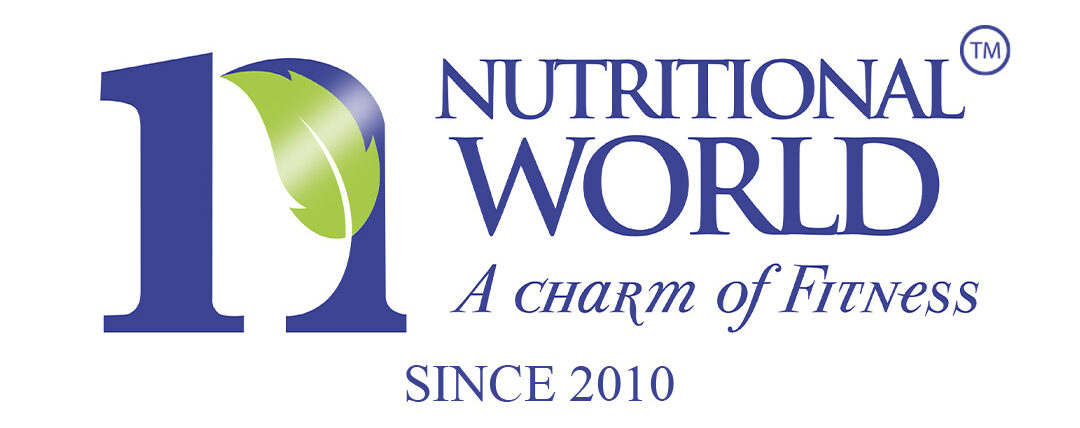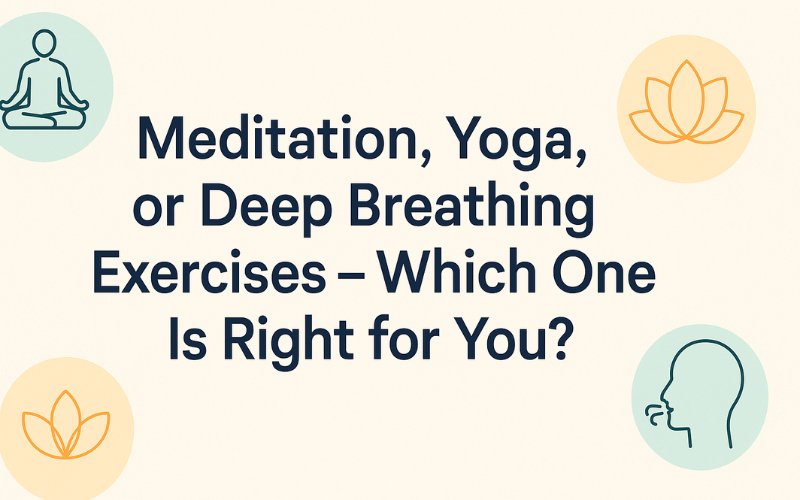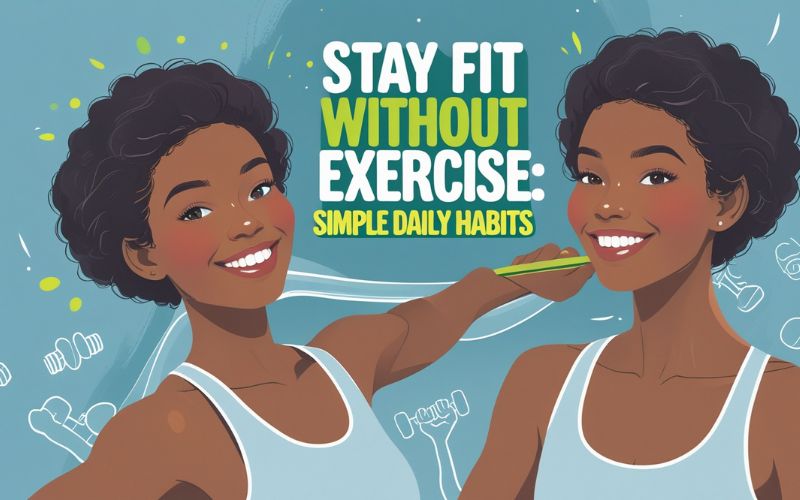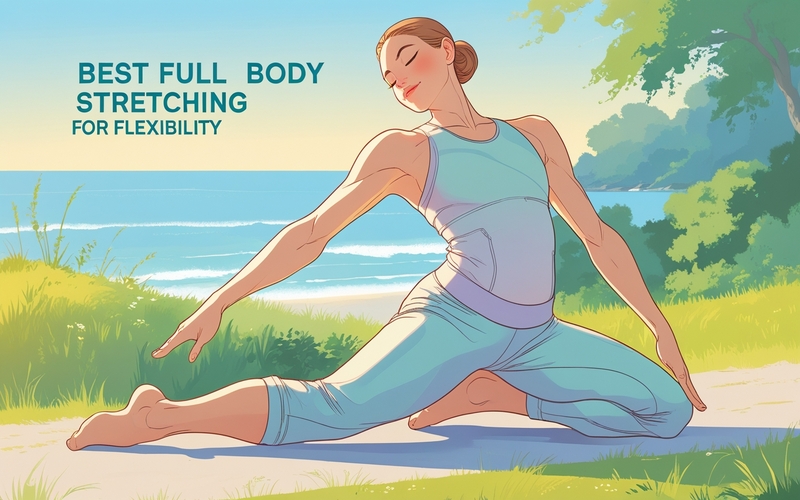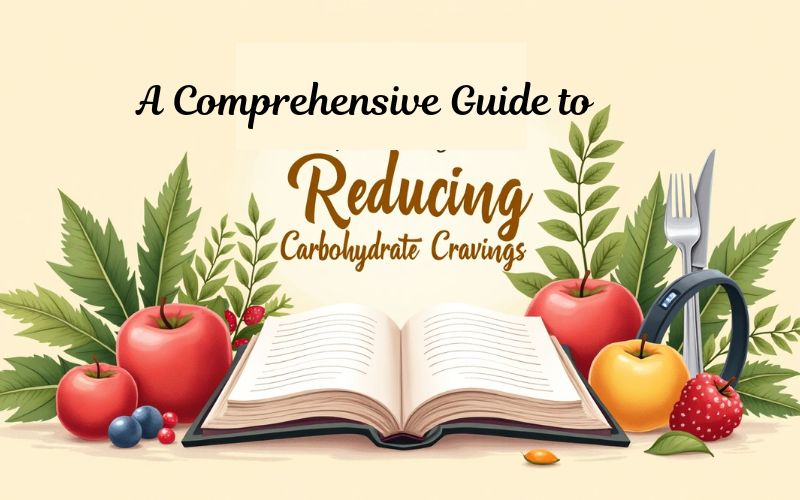In a world full of stress, distractions, and digital overload, more people than ever are turning to meditation, yoga, or deep breathing exercises for peace of mind, physical wellness, and emotional balance. But which one is best suited for your lifestyle and goals? Let’s break down the differences, benefits, and how to get started today.
Table of Contents
What Are Meditation, Yoga, and Deep Breathing?
- Meditation is a mental practice that focuses on breath, awareness, and mindfulness.
- Yoga is a holistic discipline combining physical postures, breath control, and meditation.
- Deep breathing exercises are simple breathing techniques that regulate the nervous system.
All three can reduce stress, improve sleep, and enhance mental clarity but they work in slightly different ways.
Why Are These Practices Gaining Popularity in 2025?
A surge in anxiety, burnout, and screen fatigue has led people to explore non-pharmaceutical, evidence-based self-care tools. With increasing support from research, schools, fitness apps, and even workplaces, these techniques are no longer niche; they’re mainstream wellness tools.
✅ Science-Backed Benefits of Each Technique
Benefits of Meditation
- Improves focus and concentration
- Reduces symptoms of anxiety and depression
- Boosts emotional awareness
- Promotes better sleep
Did you know? A Harvard study found that 8 weeks of mindfulness meditation increased gray matter in the brain areas linked to memory and empathy.
Benefits of Yoga
- Enhances flexibility and muscle tone
- Supports joint health and posture
- Relieves chronic pain and inflammation
- Combines movement with mental stillness
Benefits of Deep Breathing
- Activates the parasympathetic (calming) nervous system
- Reduces heart rate and blood pressure
- Helps manage panic attacks or emotional overload
- Improves oxygen flow and energy levels
🧘♂️ Meditation Techniques You Can Start Today
1. Breath Focus Technique
Choose a quiet place, close your eyes, and focus entirely on the rhythm of your breathing. Inhale slowly, exhale gently and observe without judgment.
2. Body Scan Meditation
Start from your toes and work your way up to your head, paying attention to each body part. This is great for stress release and muscle relaxation.
3. Loving-Kindness Meditation
Repeat phrases like “May I be happy. May I be well.” Then extend those wishes to others. It improves compassion and reduces anger.
4. Humming Bee Breath (Bhramari)
Inhale deeply, then hum as you exhale. The vibration calms the mind and improves sinus function.
🧘 Yoga Poses and Breathing for Beginners
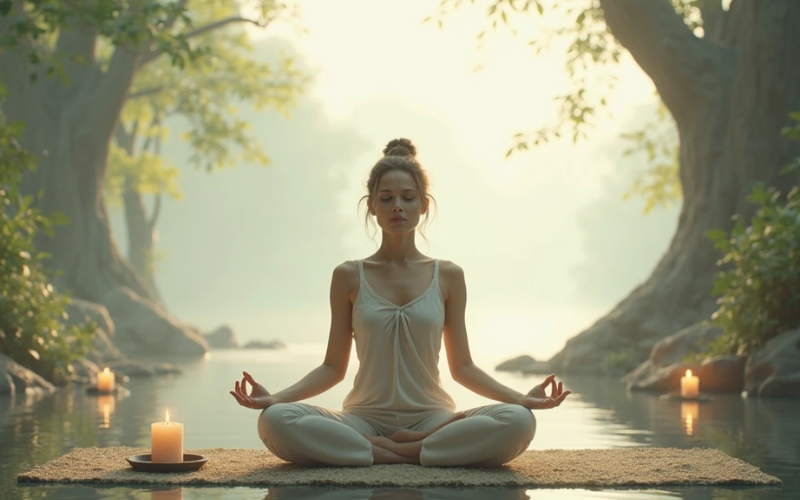
1. Child’s Pose + Deep Breathing
A restful posture that stretches the spine and hips while synchronizing your breath.
2. Cat-Cow Pose
Move between arching and rounding the spine. Coordinate with deep inhales and exhales to release tension.
3. Alternate Nostril Breathing (Nadi Shodhana)
Close one nostril, inhale, then switch and exhale. Balances both brain hemispheres and supports mental clarity.
🌬️ Deep Breathing Exercises for Instant Calm
1. Diaphragmatic (Belly) Breathing
Place one hand on your belly, inhale deeply through your nose so your stomach rises, then exhale slowly. Repeat 5–10 times.
2. Pursed Lip Breathing
Inhale through the nose, exhale slowly through pursed lips. Useful during stress or physical exertion.
3. Box Breathing (Equal Breathing)
Inhale for 4 seconds, hold for 4, exhale for 4, hold again. Great for anxiety and focus.
4. Sitali Breath
Inhale through a rolled tongue or pursed lips, exhale through the nose. Cools the body and mind.
🔍 How to Choose Between Meditation, Yoga, and Breathing?
Based on Time and Lifestyle
- Only have 5 minutes? Try deep breathing.
- Want full-body movement? Choose yoga.
- Prefer stillness and inner calm? Go for meditation.
Based on Stress or Anxiety Levels
- High anxiety: Start with breathing or guided meditation.
- Physical tension: Yoga is excellent for muscular release.
- Emotional overwhelm: Loving-kindness meditation or Sitali breath work wonders.
Ideal Combinations for Daily Routine
- Morning: 10 mins of yoga with deep breathing
- Afternoon: Quick box breathing session
- Evening: 5–10 mins of meditation to unwind
💡 Expert Tips to Build a Consistent Practice
- Start small: Even 3–5 minutes can be impactful
- Use apps like Insight Timer, Headspace, or YouTube videos
- Keep a wellness journal to track progress and mood
- Set reminders or pair your practice with a daily habit (like brushing teeth)
🚫 Common Mistakes and How to Avoid Them
Mistake: Expecting Instant Results
Fix: These are practices not miracles. Regularity matters more than duration.
Mistake: Inconsistent Routine
Fix: Commit to a time slot and treat it like brushing your teeth.
Mistake: Wrong Technique or Posture
Fix: Learn basics from certified instructors or trusted online resources.
Final Thoughts:
Meditation, yoga, and deep breathing are not competing practices; they’re complementary. Whether you start with just one or blend all three, the real benefit lies in consistency and intentionality.
By taking just 10 minutes a day, you can drastically improve your physical, mental, and emotional well-being with no equipment needed.
❓Frequently Asked Questions (FAQs)
Q1: Which is better meditation, yoga, or deep breathing?
A: All are effective in different ways. Yoga enhances physical and mental balance, meditation builds awareness, and deep breathing calms instantly. A combination offers the best results.
Q2: Can I practice these at home without supervision?
A: Yes. Start with beginner videos or guided apps. Ensure your posture is correct to avoid strain in yoga.
Q3: How long before I notice benefits?
A: Some feel better after the first session, while for others, it may take 2–3 weeks of consistent practice.
Q4: Are these practices safe for kids and seniors?
A: Absolutely. Modified yoga and gentle breathing are safe for most ages. Always consult a doctor if you have health concerns.
